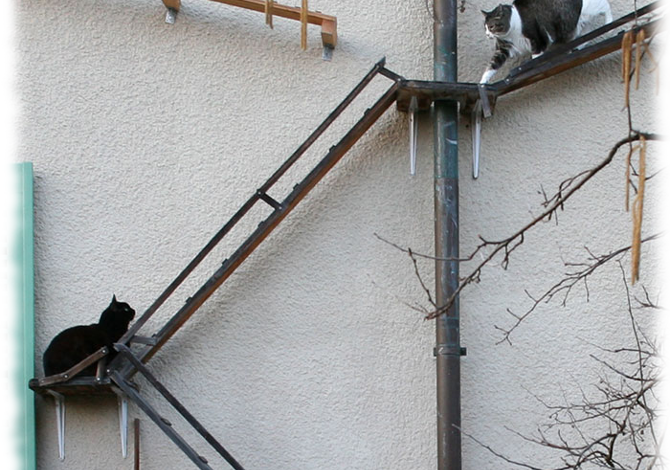Ladder safety is crucial when it comes to DIY home maintenance tasks such as gutter cleaning or exterior house painting. According to the American Ladder Institute, over 300 people die each year in ladder-related accidents, and thousands more suffer from serious injuries. To avoid becoming a statistic, it’s important to take ladder safety seriously and follow some basic guidelines.
Ladder Safety
- Before you start, you must know how to properly position a ladder. In a perfect world, the feet of the ladder should be one foot from the house for every 4 feet of vertical height (measured from the ground to where the top of the ladder touches the house). Make sure it stands firm and leveled. Keep in mind, that a ladder-leveling device can save your life. Most new ladders have a horizontal / vertical line pattern on the side to help with alignment. Inquire at your local hardware store about it.
- Always look up before installing your ladder. Many homes still have power lines leading to the house from a pole on the street. Use non-conductive fiberglass ladders in that case. Remember: utility companies use only fiberglass ladders for a reason.
- When climbing a ladder to your roof, make sure the top of the ladder protrudes 3 steps above the point of contact with the edge of the roof. Most falls occur when going from a ladder to the roof or vice versa.
- Always maintain at least 3 points of contact when climbing a ladder. This usually means that both feet and at least one hand must touch the ladder at the same time. Of course, two hands and two legs are preferred, but never achievable at all times.
- Never overreach while standing on a ladder. Make sure that most of your weight never goes beyond the side rails of the stairs. A good rule of thumb is to always keep your belt buckle between the left and right ladder rails.
- Even we, professional gutter & window cleaners, give up on some jobs. Always make a full physical appraisal of your property before proceeding with the gutter cleaning. There is no shame in giving up and calling pros, if the work can’t be done safely. The reasons for refusing from such DIY gutter cleaning chore can be: proximity to electrical wires, uneven ground to safely place the ladder, unsafe heights, steep roof slopes, or unusual roofline characteristics. This is obviously a call for judgment on your part. However, be realistic about your ability to get the job done in a safe manner. Never compromise your safety for a house choir.
Roof safety
- Never walk on a wet, frosty, icy, or snowy roof. If it’s a frosty morning, wait a few hours for the sun to defrost the shingles.
- Don’t try to walk on a steep roof (more than 4:12 pitch). Move your ladders around the house and reach (but never overreach) to scoop the debris into a bucket instead.
- Do not attempt to do any work if strong winds or storms are expected.
- On the roof, never lean down towards the gutter. Never bend over to put your hand in the gutter. This causes your body weight to shift towards the edge of the roof and you can lose your balance.
- Do not use a water hose to flush roof gutters. A wet roof is extremely dangerous. After the debris is removed from the gutter and there is no obstruction to the flow, your job is done. The first good rain will finish with the cosmetic details for you.
- Always use heavy-duty gloves and never put bare hands in the groove. First, there can be anything that you don’t want to touch. Also, you are likely to cut your hand on sharp edges or screws inside the gutter (especially around the downspout).
You can learn more about ladder safety on Canadian Centre for occupational health and safety WEBSITE.


Comments
Comments are closed.